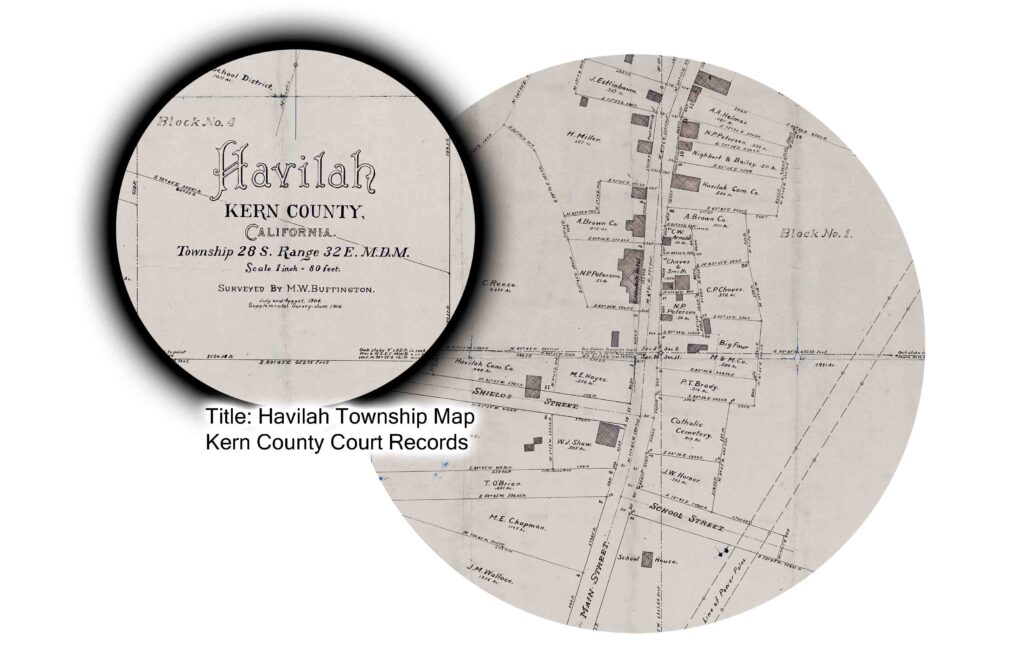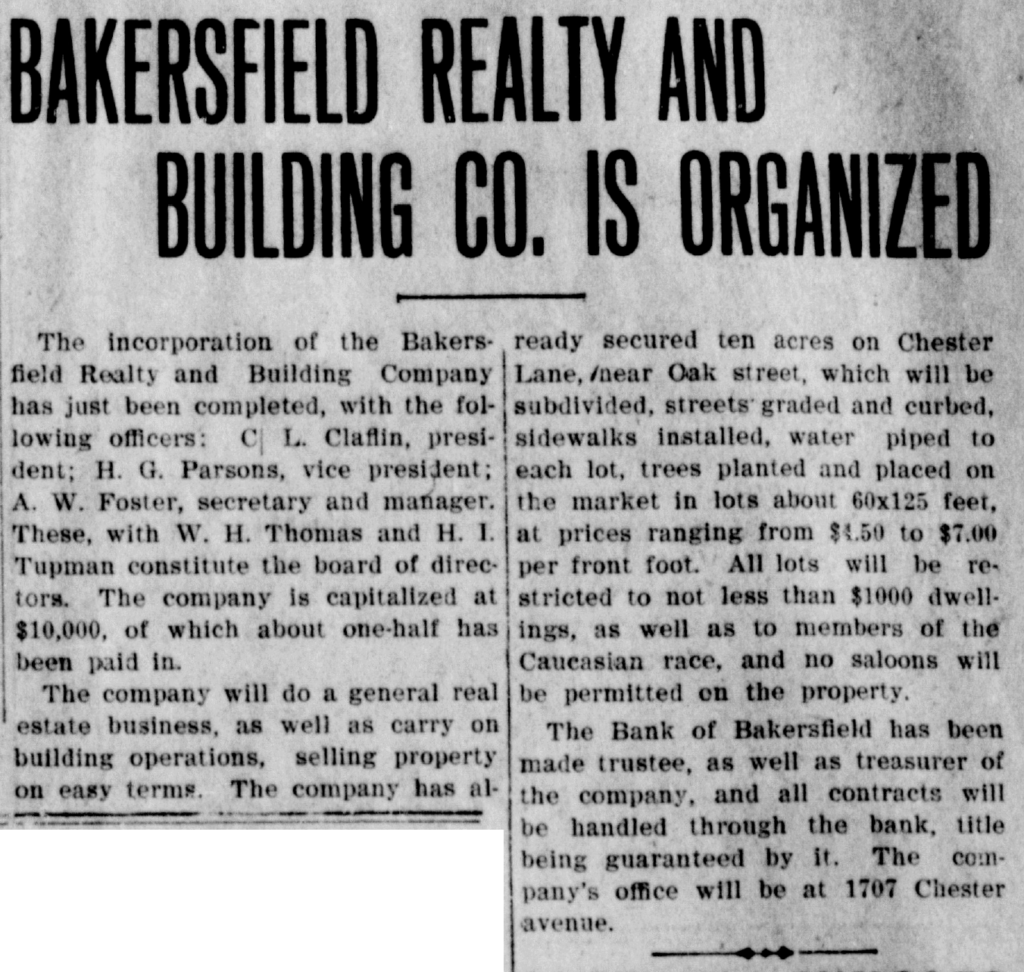Before 1938 – Buying on Contract – Covenants – Covenant Database – East Bakersfield
Education – Eminent Domain – Moving into a Neighborhood – Neighborhoods
Public Housing – Resources – Rumford Fair Housing Act – Suburban Expansion – Zoning
Establishing Kern 1866

At the establishment of Kern County, Havilah, CA was the county seat. It originally had about 800 inhabitants. Reports describe Havilah and surrounding areas as well wooded and watered and well adapted to agricultural purposes and also rich in mineral wealth. The area was isolated because “…distance and difficulty of a canyon being walled in by high mountains on three sides…prevented it from being thickly inhabited.” Euro-American settlers were attracted to Havilah because of the prominent river. John C. Fremont, an American-West explorer who was responsible for the killing of hundreds of California indigenous people and later a US senator from California, named the Kern River after Edward M. Kern, a topographer and US Army Captain who accompanied Fremont into the area. Edward M. Kern had also led various US sponsored violent anti-indigenous campaigns in the Sacramento valley in 1847. Mining and resources related to the use of natural resources drove colonization into the area during the 1850s. Thomas Baker, a state assembly member from Tulare, wrote a bill creating the County of Kern, in honor of Edward M. Kern, and Governor John Bigler approved the enactment in 1855. It was not until 1866, that the area had the requirements to form into a county. On August 1, 1866, a special meeting of the Board of Supervisors of Kern County was held at Havilah for the purpose of organizing the County. Representatives wrote the following in the minutes of the Board of Supervisors for Kern County: “Said meeting being held pursuant to an Act of the Legislature of the State of California, approved April 2nd A. D. 1866, entitled, ‘An Act to create the County of Kern, to define its boundaries and to provide for its organization.’ At which meeting the following proceedings were had.”


Real Estate- Before 1938

Bakersfield Realty organizations supported race restrictions in housing covenants. This 1909 article announced the organization of the Bakersfield Realty Building Company in 1909 stating, “All lots will be restricted to not less than $1000 dwellings, as well as to members of the Caucasian race, and no saloons will be permitted on the property.” Prior to 1938, home deeds featured racially exclusive language.
In a report conducted by the State of California in 1930 found that there were 24 out of 47 replies that cities had segregated Mexican Districts.
“In addition, other boards cited clauses inserted in deeds and sales contracts calculated to confine Orientals, Mexicans, and Negroes, to certain districts.”
Mexicans in California; report of Governor C. C. Young’s Mexican Fact Finding Committee, 1930
Here is an example of racially exclusive language used in 1924. This is not to say that housing discrimination did not exist, but that housing was segregated at the individual home level, led by sellers and real estate agents. It is not until after 1938, that racially restrictive covenants are used at large scale for entire tracts, neighborhoods, and blocks. The Bakersfield grant deed reads, “The lands herein conveyed shall never, at any time, be sold to or rented to or occupied by any person not of the white or Caucasian race.” This is an example of a racially exclusive covenant written in a deed.



